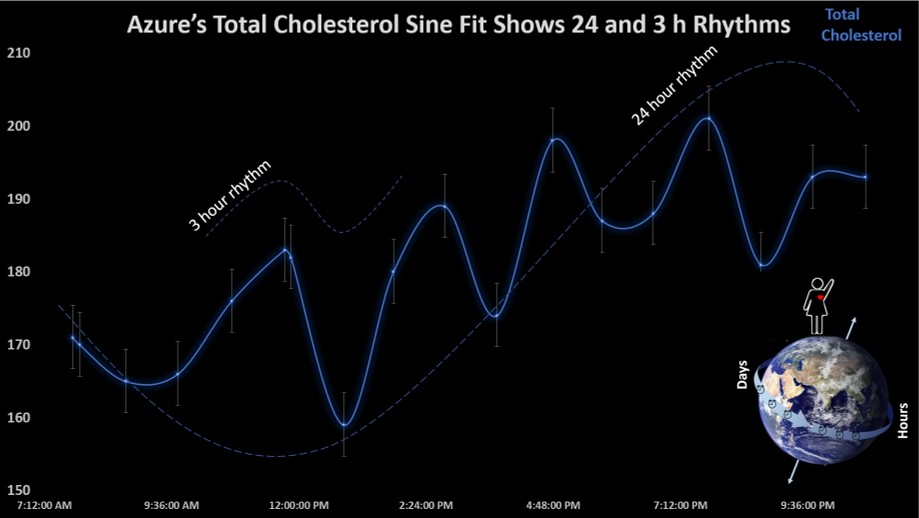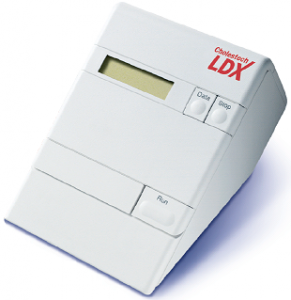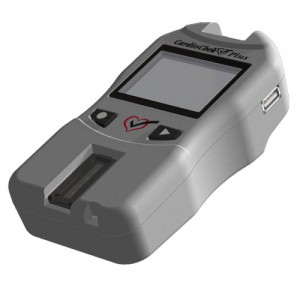Quantified Self Guide to Tracking Cholesterol and Triglycerides

Azure Grant
November 8, 2017
What is a QS guide?
The purpose of a QS guide is to make it easy for you to start tracking a new metric. Searching for the right device, head-scratching over how to use the thing, and figuring out what experiment to try first can be a huge time sink. Our goal is to offer a worked example of all of these steps with the device(s) we found to be the best on the consumer market. While the most sophisticated tools for physiological measurements are offered through professional laboratories, our guide is – of course – meant to help you with your own, DIY self-tracking projects. It’s not an extensive review of every option, but it will lead you from purchasing, to validating, to syncing the data, to doing a first experiment. As you go through the process yourself, much of your learning will come from building a mental model of how your own physiology works through additional reading and experimentation. Don’t shy away from that work – a QS project may not answer your question expediently, but it has the potential to teach you a lot.
The Guide to Tracking Cholesterol and Triglycerides will discuss two home lipid trackers: the CardioChek Plus and the Cholestech LDX. I will give an in-depth review of my experience with the former. The guide will touch on the science of the tests and devices, their accuracy and precision, and suggest a first experiment to try.
A little about blood lipids
While we normally think of cholesterol and triglycerides as risk factors for heart disease, there’s actually much more to them. In fact, it turns out that the basic functions of lipid components — including total cholesterol, triglycerides, HDL-c and LDL-c, not to mention their roles in heart health — are an active area of research and the center of an ongoing controversy. What lipid measurements can certainly do is reflect how your body is handling ingested animal products and fats. If you’d like to learn more, we put together an animation that goes a little deeper into the physiology.
Option 1: CardioChek Plus
What It Does: The CardioChek Plus measures blood lipids including total cholesterol, HDL-c and triglycerides using test strips. The device itself is battery powered and about the size of a Game Boy Color (and it makes similar sounds!). Each sample requires 40ul of blood and takes a few minutes. The major limitation of the device is its range of operation (it won’t report results if your lipids are very high or very low -and different lots of test strips have different operating ranges. Be sure to read the documentation before you purchase). It is an FDA approved, CLIA waved, testing system for clinical and paraclinical use.
Cost: New units retail for ~$800-$1000, but units appear on eBay for around $400. The tests cost ~$15 each and come in bundles of 15. Additionally, you will need rubbing alcohol, 2.8 mm lancets, 40 ul capillary tubes for blood collection and gauze wipes. Cost of extra supplies comes to about $200 for 15 tests.
Getting Your Data: The CardioChek stores data locally and has a limited memory. We recommend transferring the raw data by hand (3 numbers per test) to a personal spreadsheet.
Accuracy, Precision and Supporting Research: Finding information about the accuracy and precision of a new device can be non-trivial. Confirming what you learn can be even harder. We’ve had several months to figure out measurement validity for home lipid testing, and it’s a little complicated. At present, there is measurable variability (~13% is acceptable) in results obtained from clinical laboratory tests (Quest, LabCorp) as well as those from para-clinical tests like the CardioChek Plus. Chris Hanneman has written a great report that comments on the not-very-useful way validations are reported by glucose meter companies – and we acknowledge that the same is true here. The company that produces the device, PTS Diagnostics, reports numerous validations at the bottom of this page under resources, but we’ve averaged the basics across these many reports to produce a summary table.
Accuracy is a measure of how close a measured value is to the true value of the measurement (obtained via some gold-standard device). For accuracy, PTS diagnostics reports 18% error for total cholesterol (averaged across reported tests on the website in this document), 8% for HDL-c, and 13% for triglycerides.
At least one academic group has published a validation of this device: Gao et al., 2016 . They reported 3% error for total cholesterol, 7.1% error for HDL-c, and 7.6% error for triglycerides.
Precision is a measure of agreement between two measures which should be identical. In other words, it’s a measure of how much noise the device adds to the signal. During our own testing we measured the precision of the CardioChek Plus; you can view our results here. We actually found the CardioChek to be more precise than the company reports (so far).
 Option 2: Cholestech
Option 2: Cholestech
What it Does: The Cholestech LDX also measures total cholesterol, HDL-c and triglycerides. However, the device is larger (shoebox sized) and less mobile than the CardioChek Plus — it must be plugged into an outlet and calibrated in each new location.
Cost: New units retail for ~$2000, but used units can be easily found on eBay for around $50-$100 each.Note: make sure units have ROM pack version 3.40 or higher, and calibrate the used device.
Getting Your Data: Similarly, we recommend transferring the raw data by hand (3 numbers per test) to a personal spreadsheet.
Supporting Research: Whitehead, 2014 offers accuracy and precision measurements. Bias was 11.6% for total cholesterol, and 12.9% for HDL-c. The authors reported %CV of 2-3.5% for HDL-c and total cholesterol (pretty good!) – with the caveat that the venous blood samples they compared are less likely to introduce measurement error in comparison to the finger prick samples used at home.
My Experience, and What I Tried First
I only had the opportunity to use the CardioChek Plus, but my comments should apply to both devices. Setting up the device is trivial, but testing requires a few practice trials. The main challenge is the amount of blood required; it’s forty microliters (µl) which is equivalent to 2 large drops of blood. For some people I worked with, this was easy. But for others like myself, running the sampling hand under a hot tap is necessary to get the blood flowing. On top of this, the blood needs to be collected and deposited on the test strip within a couple of minutes to get an accurate reading. If this sounds a little off-putting, don’t worry too much- one becomes a blood collecting ninja fairly quickly. The pay of is in the ability to learn what my lipids are doing in near-real-time.
A First Experiment
While preparing for the project I wondered how fast my lipids really changed. I knew that seasonal, ovulatory cycle, and daily changes in lipids had been reported in the literature, but I wasn’t able to find any examples of how individual ambulatory humans varied hour by hour. The dynamic actions of these compounds on short timescales are less well characterized than changes on the timescale of years, but they are likely to contain useful health information. Because of all of this, I decided to measure my lipids every hour from the time I woke up, to the time I went to sleep. I won’t go into everything I saw here, but I will share one picture.
I’m 22 and in good health, yet across a single day I saw my total cholesterol nearly 50 mg/dL (almost plunking me into the at-risk for CVD category). Even more interesting, these changes seemed to occur at regular 3 h intervals, gradually climbing higher until they peaked around 8 pm. I learned that these changes might actually tell me more about my health than any one of those measurements alone could have. If you’re interested in getting a general sense of what your lipids are doing before you dive into more complex tests, I highly recommend setting a date with your CardioChek Plus or Cholestech LDX for some hourly measurements. Want a more in-depth argument for why you should try this first? Check out this animation.
This guide may have revealed that blood lipids are more complicated than you thought. But there’s no need to be overwhelmed — explore the metric, and you’ll build a deep understanding of your lipids in the process.




